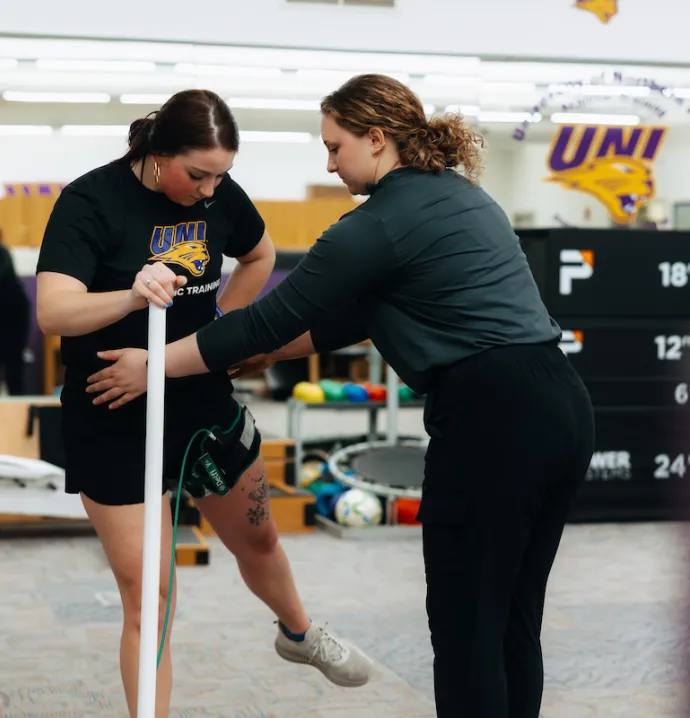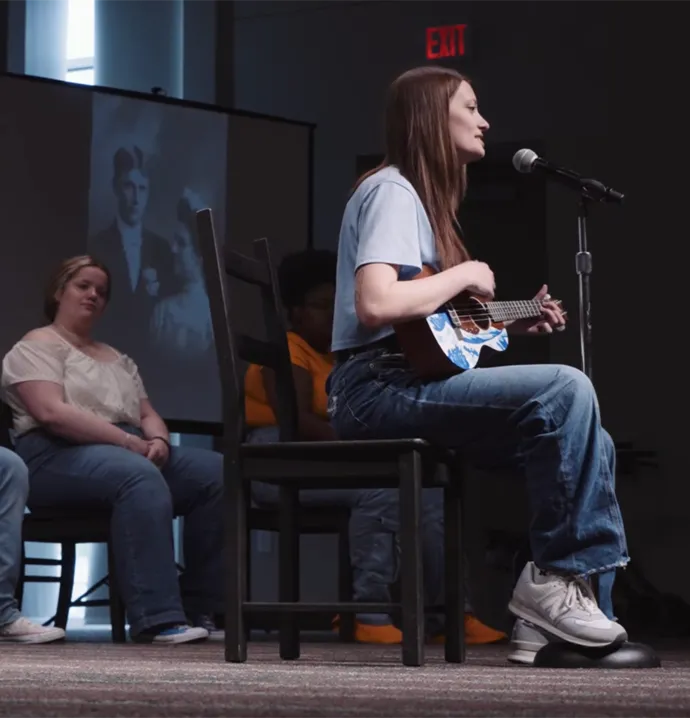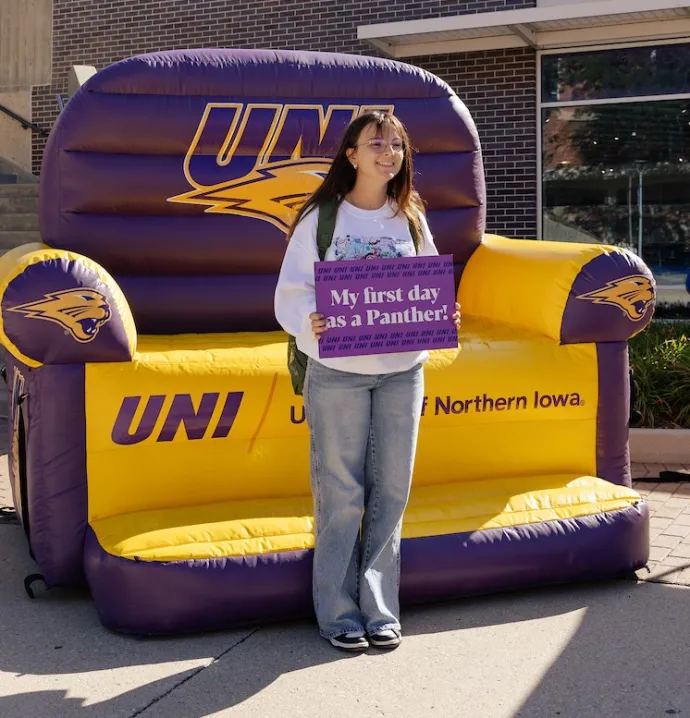Modeling COVID-19 infection
Modeling COVID-19 infection
The dots bounced and collided across the computer screen. Their movement was random, but University of Northern Iowa physics major Madelyn Johnson saw a purpose in the chaos.
The dots were part of a software program that generated random walker simulations, which are often used to represent the interactions of people in the world. And now Johnson and Ali Tabei, an associate professor of physics, are using this software to create a model of how infections spread. It could then be applied to simulate the spread of COVID within a community.
“We both got interested in how it could demonstrate infection rates, so it kind of gradually grew into a big project from there.” Johnson said.
She has been working with Tabei throughout the summer and fall semesters.
“We want to see how mobility of people can influence the rate of infection and the spread of disease,” Tabei said. “Although Madelyn did not have any prior coding experience, in a short amount of time, she learned how to code and simulate a system of particles randomly diffusing in space.”
Her close, one-on-one research with Tabei is exactly what attracted her to UNI in the first place.
Johnson has been fascinated by physics since high school. She knew that teaching physics was her career goal and a family friend recommended UNI. Johnson made the nearly four-hour trek to campus from her hometown of Peoria, Illinois, to see it for herself.
“After visiting, I fell in love with the campus and with the physics department. I got to meet with the head of the department on my first visit, and it was really nice.” Johnson said. “It was cool to meet with professors right away when I visited.”
Johnson started working as a research assistant with Tabei in the spring of 2020 - remotely, thanks to COVID-19. She was excited for what she would learn in the role but never anticipated helping to develop a program with a real-world application.
Johnson had been training for her position using MATLAB software, which is standard for industry use. The specific type of random walker simulations she generates show how dots, representing people, interact within a set boundary, while recording how many times dots collide.
Apart from gaining experience with industry-standard software, Johnson was also able to observe how a research team works together.
When she’s not researching in the lab, Johnson is a member of the physics club and spends several hours a week with the Panther Marching Band as a member of the colorguard.




